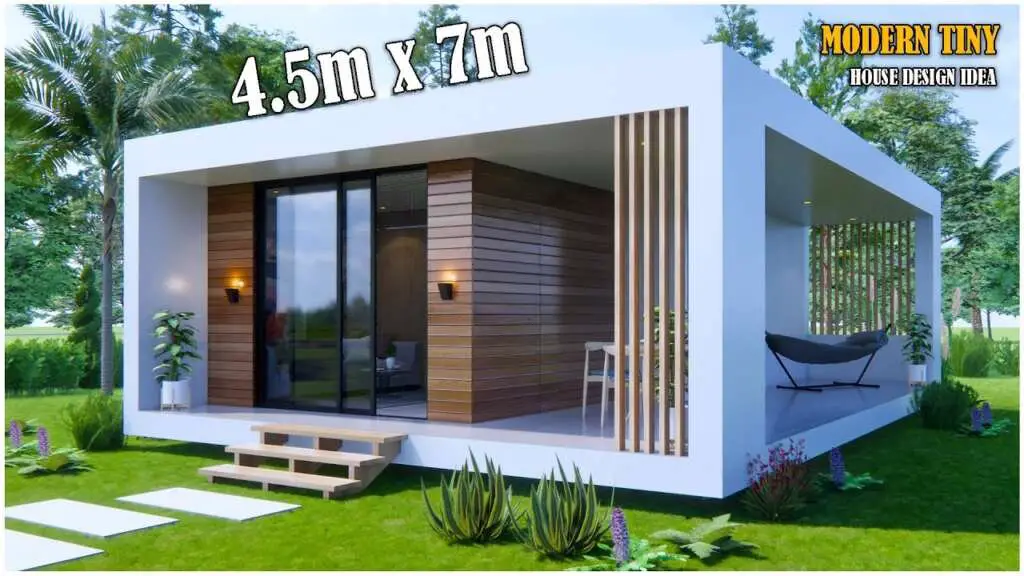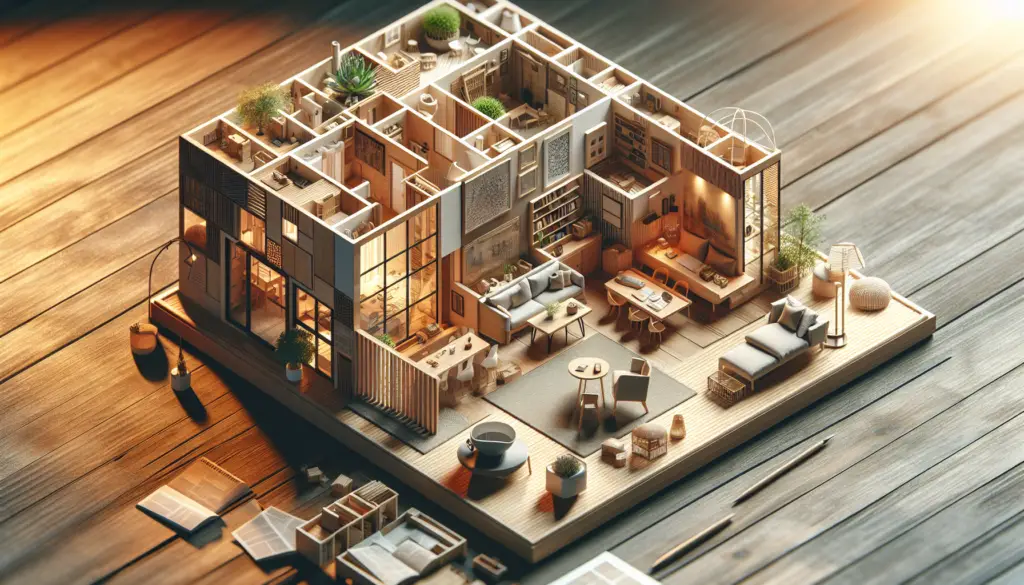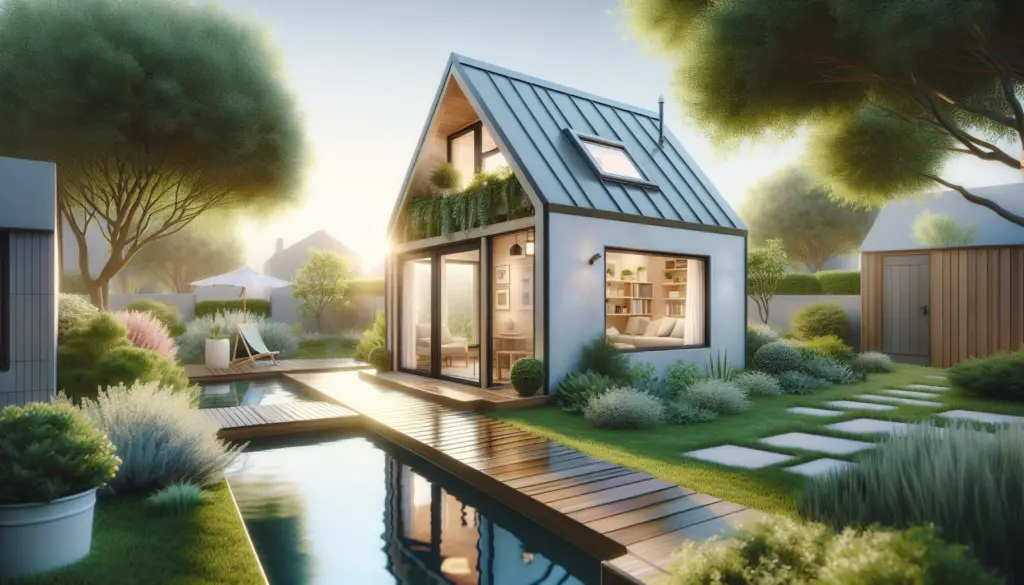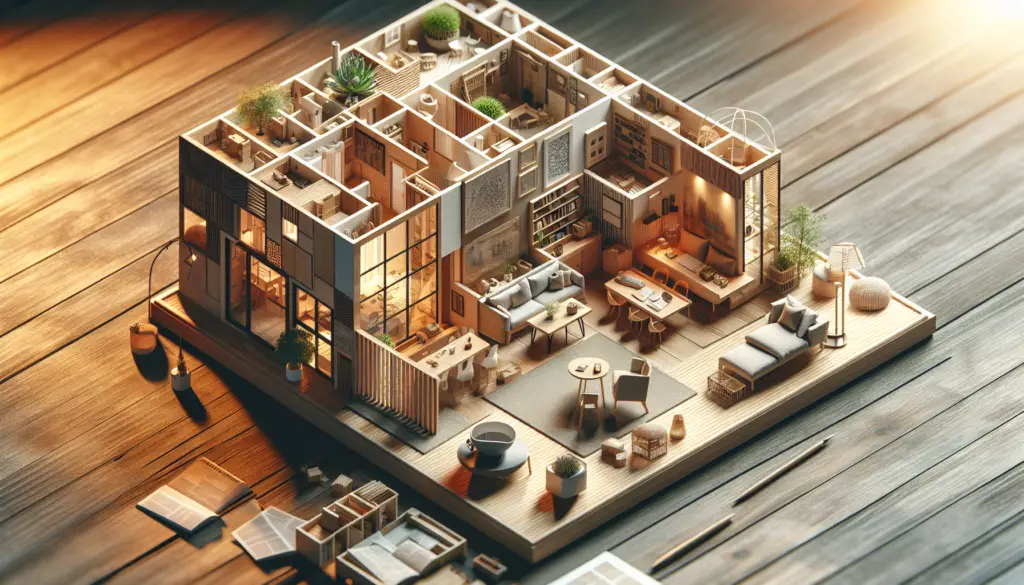Welcome to the fascinating world of tiny house design! In this article, we will be exploring the concept of modern tiny houses with a specific focus on the box type design. We will be discussing a 1-bedroom, 1-bathroom house plan with free floor plans available in a video. The video also showcases a 3D exterior and interior presentation of the design, giving you a real sense of what the house will look like. The dimensions of this tiny house are 4.5 meters by 7 meters, with a total floor area of 54 square meters. On the ground floor, you’ll find a living area, dining area, kitchen area, 1 bedroom, 1 bathroom, a laundry area, and a balcony for entertaining. The estimated cost for building this tiny house ranges from $15,000 to $19,000 USD, depending on your location. So sit back, relax, and let’s dive into the world of tiny house design together!
In this video by Tiny House Design, you’ll get to see the house plan in all its glory. The video showcases the 3D modeling and rendering done using software such as Sketchup and Enscape. If you enjoy watching house design videos and want to see more, make sure to check out the channel and subscribe. We hope you find this article and the video inspiring and informative. Good luck on your own tiny house design journey, and thank you for joining us here!
Dimension of Tiny House Design

This image is property of i.ytimg.com.
Introduction to Tiny House Design
Welcome to the world of tiny house design! With the rising popularity of minimalism and sustainable living, more and more people are opting for tiny houses as their choice of a cozy and efficient living space. However, designing a tiny house requires careful consideration of dimensions to maximize functionality and ensure a comfortable living environment. In this article, we will explore the importance of dimensions in tiny house design and provide valuable insights on designing the perfect tiny house for your needs.
Importance of Dimensions in Tiny House Design
When it comes to tiny house design, dimensions play a crucial role in determining the overall functionality and livability of the space. Every square inch counts in a tiny house, so it’s important to make careful decisions about the size and layout of each component. From room placement to storage solutions, dimensions directly impact the comfort and usability of your tiny home. By understanding the importance of dimensions, you can create a well-designed tiny house that meets your specific needs and enhances your lifestyle.
Design Considerations for Tiny Houses
Before diving into the specific dimensions, it’s important to consider some key factors that influence tiny house design. These factors include your lifestyle, budget, and personal preferences. Think about how you plan to use the space and what features are essential to your daily life. Additionally, consider the potential challenges that come with living in a small space, such as limited storage and the need for multi-functional furniture. By addressing these design considerations upfront, you can make informed decisions about the dimensions of your tiny house.
Minimum Square Footage Requirements
While the definition of a “tiny house” may vary from person to person, there are generally accepted minimum square footage requirements for a dwelling to be considered a tiny house. The exact dimensions can vary based on local regulations and personal preferences, but a common guideline is that a tiny house should be no larger than 400 square feet. This provides enough space for basic amenities and functionality while still maintaining the small footprint that defines the tiny house movement.

Maximum Square Footage Considerations
On the other end of the spectrum, it’s equally important to consider the maximum square footage for a tiny house. While it might be tempting to add more space, remember that the goal of a tiny house is to downsize and simplify. Going beyond a certain square footage defeats the purpose of living in a tiny house and might even require additional permits and zoning compliance. Keeping the size of your tiny house in check ensures that it remains an efficient and manageable space.
Optimal Dimensions for Tiny Houses
Now that we’ve discussed the minimum and maximum square footage considerations, let’s delve into the optimal dimensions for tiny houses. While there is no one-size-fits-all answer to this question, there are some general guidelines to keep in mind.
In terms of length and width, most tiny houses fall within the range of 18 to 30 feet long and 8.5 to 9.5 feet wide. These dimensions allow for easy transportation on roads and highways and provide enough space for different room configurations. However, it’s important to consult local regulations and restrictions regarding the maximum size for transportable tiny houses in your area.
Height is another important dimension to consider. The standard height for a tiny house is around 13.5 feet. This allows for comfortable headroom and ensures compliance with transportation regulations. However, if you plan to have a loft or elevated sleeping area, you may need to adjust the height accordingly.

Layout and Floor Plan Design
The layout and floor plan of a tiny house greatly influence its functionality and flow. When designing your tiny house, consider an open concept layout that maximizes the use of space and provides a sense of openness. This can be achieved by combining the living area, dining area, and kitchen into one multifunctional space. By eliminating unnecessary walls and barriers, you can create an open and inviting atmosphere.
Additionally, strategically placing windows and using natural light can make your tiny house feel more spacious. Incorporating large windows and skylights allows for ample natural light, making the space feel bright and airy. This not only enhances the aesthetic appeal of your tiny house but also reduces the need for artificial lighting during the day.
Room Placement and Size
In a tiny house, every room serves a specific purpose, so it’s important to carefully consider the placement and size of each room. The bedroom, bathroom, and kitchen are typically the core rooms of a tiny house, and their dimensions should be optimized for functionality and comfort.
The bedroom should be designed to fit a bed that suits your preferred sleeping arrangements. A full-size bed or a loft with a mattress can be a popular choice for tiny houses. It’s important to consider the clearance above the bed to ensure a comfortable sleeping experience.
The bathroom should be compact, yet functional. Consider incorporating space-saving fixtures such as a corner sink, a wall-mounted toilet, and a shower stall with a folding door. These design choices optimize the limited space available without compromising on convenience.
The kitchen is another crucial area that requires careful planning. Consider utilizing vertical space with cabinets that reach the ceiling, as well as utilizing multipurpose kitchen appliances to save space. Maximizing counter space and incorporating efficient storage solutions will greatly enhance the functionality of your kitchen.
Storage Solutions in Tiny Houses
Storage is a key aspect of tiny house design, as it allows you to keep your living space organized and clutter-free. When it comes to storage solutions, make sure to utilize every inch of available space. This includes utilizing vertical space with tall cabinets, installing built-in shelves, and utilizing under-bed storage.
Multifunctional furniture is also a great option for maximizing storage in a tiny house. Look for pieces that have built-in storage compartments, such as ottomans with hidden storage or beds with drawers underneath. By incorporating these space-saving solutions, you can ensure that everything has its place in your tiny house.
Furniture and Fixture Selection
Choosing the right furniture and fixtures is crucial in optimizing the limited space in a tiny house. Look for furniture that is versatile and compact, such as folding tables and chairs. Opt for furniture with built-in storage to maximize functionality. Additionally, consider lightweight and modular furniture that can be easily rearranged or stored when not in use.
When selecting fixtures such as appliances, sinks, and lighting, opt for compact and energy-efficient options. Consider the dimensions of each fixture to ensure it fits seamlessly within your tiny house layout. By carefully selecting the right furniture and fixtures, you can create a functional and visually appealing interior space.
Conclusion
Designing a tiny house requires careful consideration of dimensions to maximize functionality and create a comfortable living environment. By understanding the importance of dimensions in tiny house design, you can create a well-designed space that meets your specific needs and enhances your lifestyle. From layout and floor plan design to room placement and storage solutions, the dimensions of your tiny house play a crucial role in creating a space that is both functional and aesthetically pleasing. So, embrace the challenge of designing a tiny house and create your perfect small sanctuary!
Hi everyone! Today I want to share with you a concept for a modern tiny house design.
This house design is a box-type and consists of 1 bedroom and 1 bathroom.
You can find the free floor plan with dimensions available in the video!
The 3D exterior and interior presentation showcases the design of this tiny house.
The house plan has dimensions of 4.5m x 7m, and the full size is 6.74m x 8.04m. The total floor area is 54sqm.
This house plan includes the following on the ground floor:
- Living Area
- Dining Area
- Kitchen Area
- 1 Bedroom
- 1 Bathroom
- Laundry area
- Balcony (Entertainment)
The roof floor is not specified in the video.
The estimated cost for building this house is from $15,000 – $19,000 USD, but the price may vary depending on the location.
The software used for the design includes 3D modeling using Sketchup and 3D rendering with Enscape.
I hope you all like it and enjoy watching my videos.
To get more house design ideas, visit my channel and don’t forget to subscribe:
👉 / @tinyhousedesign168
Good luck everyone. Thank you!

